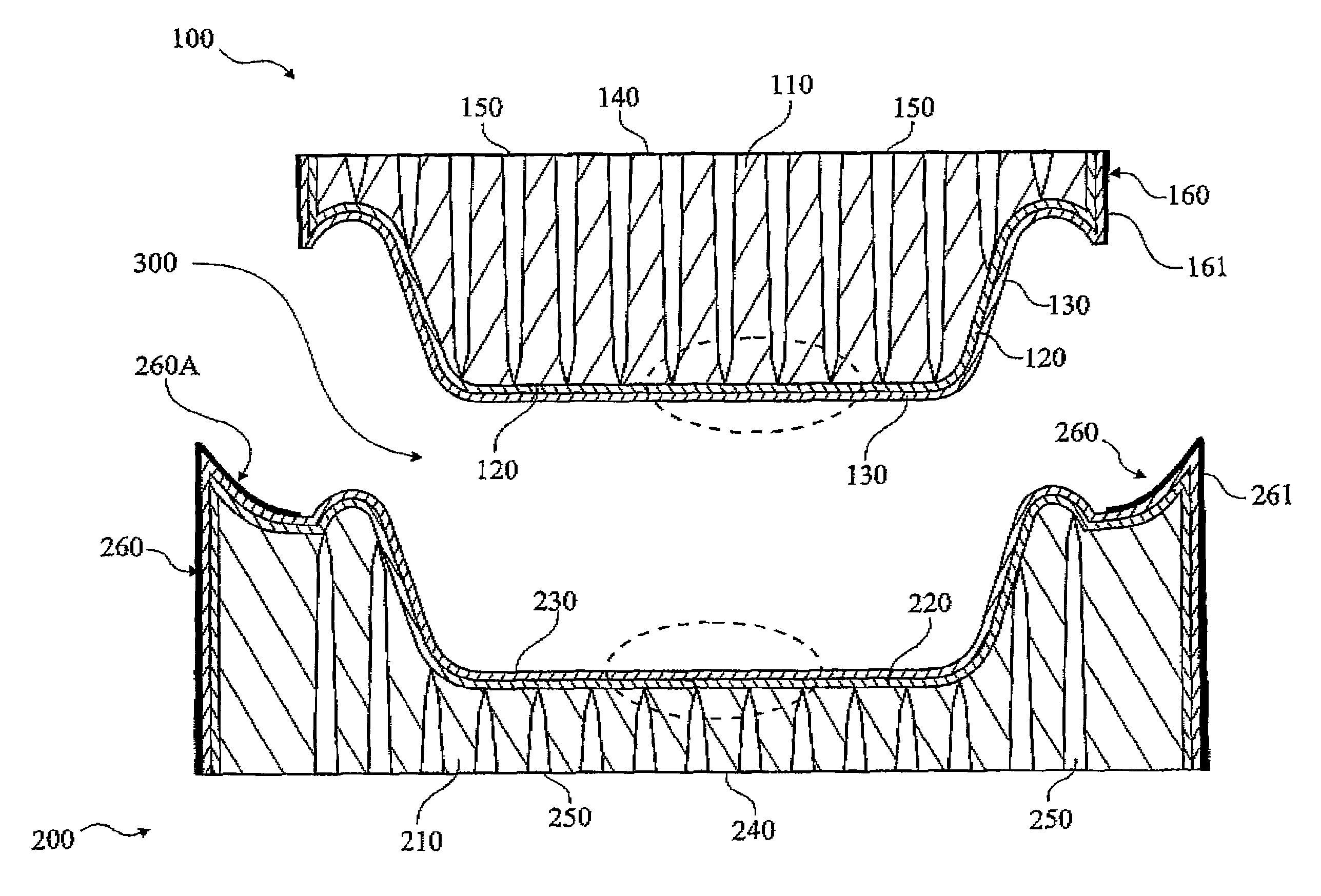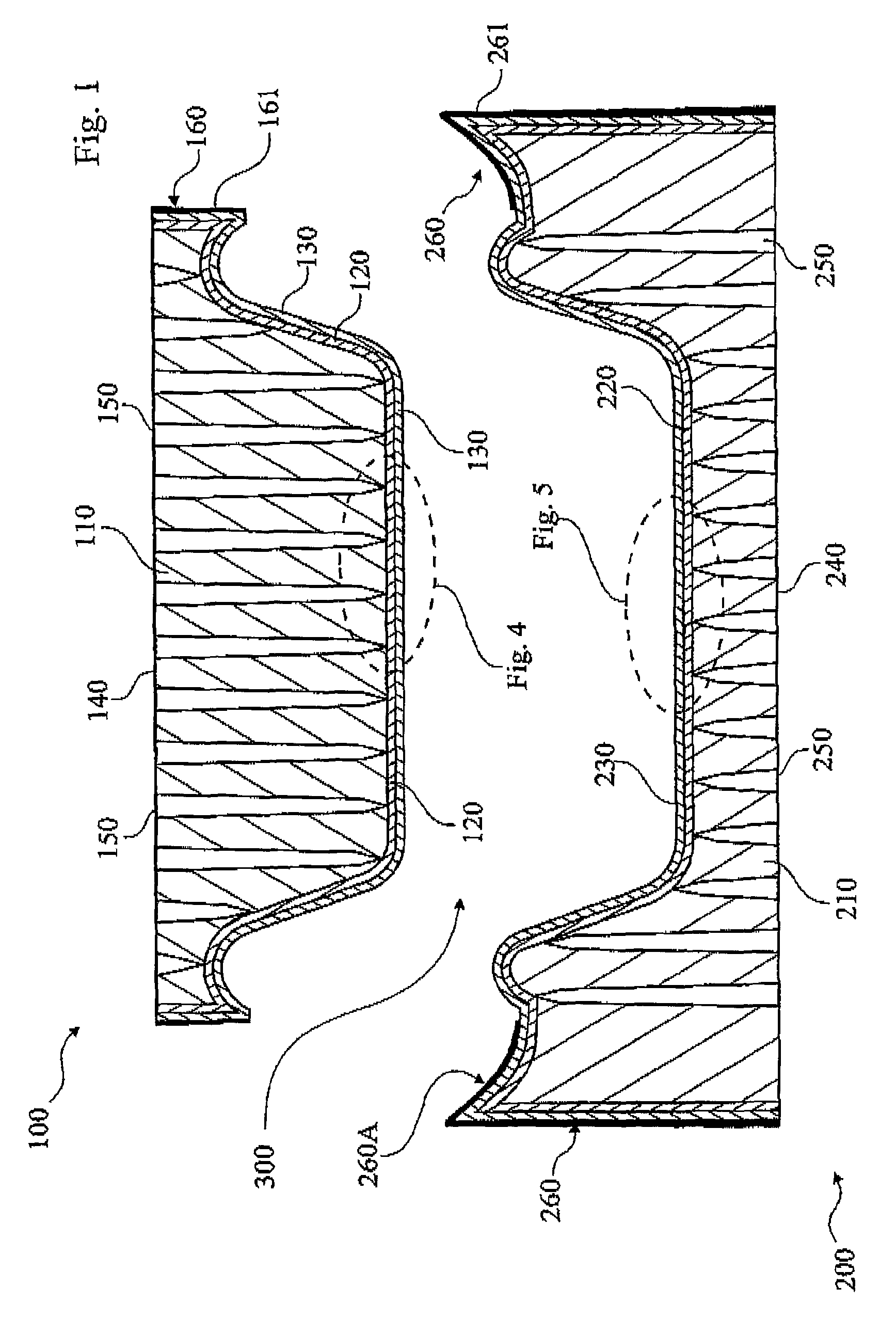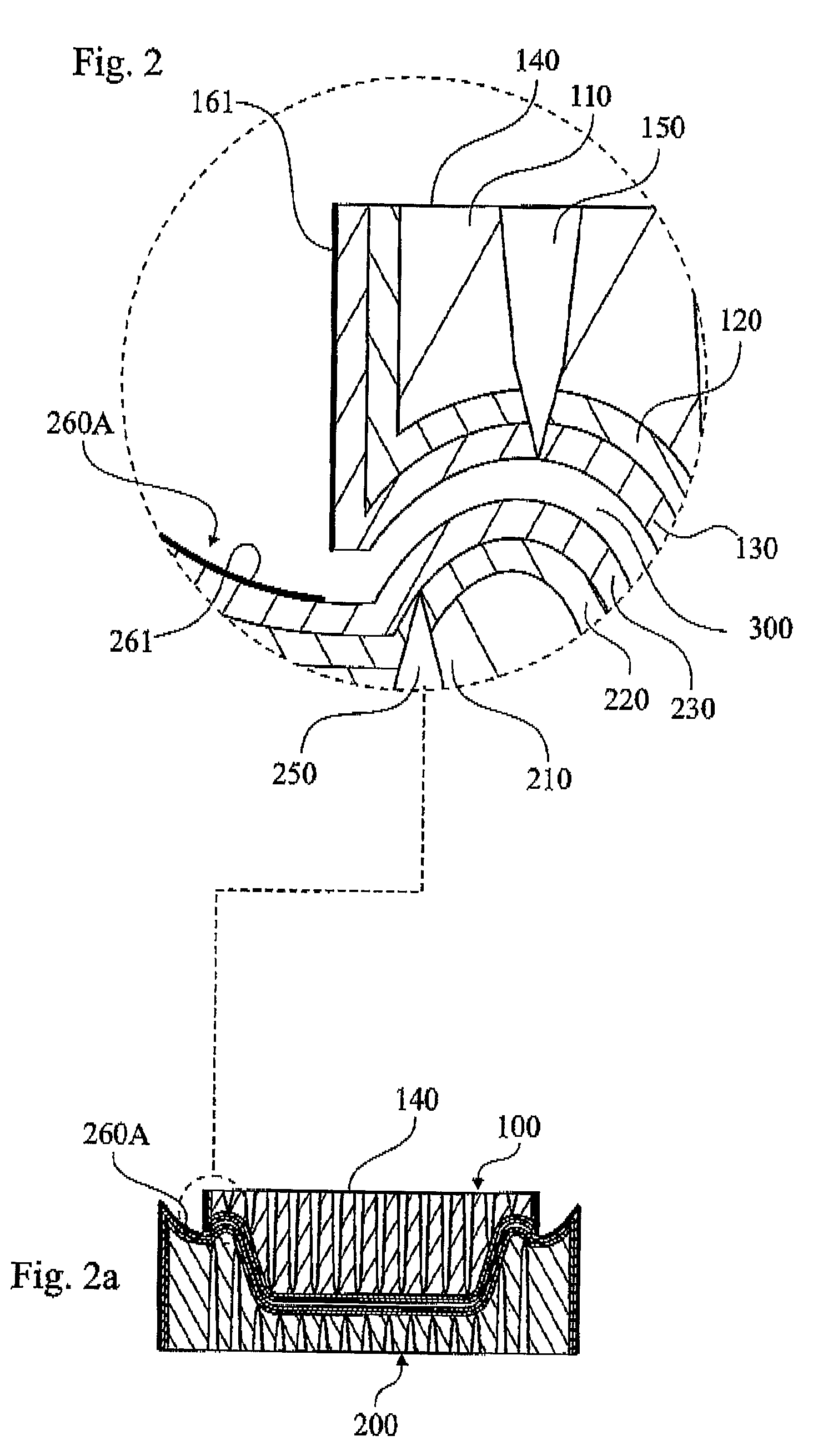Pulp mould and use of pulp mould
a pulp mould and mould body technology, applied in the field of pulp moulds, can solve the problems of distortion and deformation deficiencies, complicated shape of conventional pulp moulded objects, distortion of packaging materials, etc., and achieve the effect of minimizing or eliminating some disadvantages
- Summary
- Abstract
- Description
- Claims
- Application Information
AI Technical Summary
Benefits of technology
Problems solved by technology
Method used
Image
Examples
second embodiment
[0057]In FIGS. 2′, 2a′ according to the invention there is shown the position of the two mould halves 100, 200 during the heat press forming action. As can be seen there is formed a forming space 300 between the mould surfaces 130, 230, that is about 1 mm., preferably in the range 0.5-2 mm. As also can be seen from FIG. 2′ the mating surfaces 161, 261 of the mould halves 100, 200, do form a substantially smaller gap 300′ than the forming space 300. The mating surfaces 161, 261 is somewhat tilted to the left as is shown by the angle α in order to facilitate introduction of the male 100 into the female mould 200. Also it can be seen that the bottom surface 140 of the male mould is above the level of the upper portion 260A of the female mould, i.e. there is formed a gap between the support and heat plate 410 (see FIG. 10) of the male mould 100 and the female mould 200, which is feasible thanks to the arrangement according to the inventive process where the applied pressure may be direc...
first embodiment
[0062]The base structure 110, 210 of the shown embodiment contains sintered metal powder 111, 211 of the fabricate Callo 200 from the above mentioned Callo AB. Callo 200 is a spherical metal powder with a particle size range between 0.71-1.00 mm and a theoretical pore size of about 200 μm and a filter threshold of about 100 μm. The chemical composition of Callo 200 is 89% Cu and 11% Sn. As a way of example a sintered structure using Callo 200 and sintered to a density of 5.5 g / cm3 and a porosity of 40 vol-%, would have about the following characteristics; tensile strength 3-4 kp / mm2, elongation 4%, coefficient of heat expansion 18·10−6, specific heat at 293 K is 335 J / (kg·K), maximum operative temperature in neutral atmosphere 400° C. The pores 112, 212 of the base structure 110, 210 in the first embodiment has thus a theoretical pore size 112d, 212d of 200 μm, enabling liquid and vapour to be evacuated through the pore structure.
[0063]FIG. 8 shows a part of the moulding surface 130...
PUM
| Property | Measurement | Unit |
|---|---|---|
| diameters | aaaaa | aaaaa |
| diameters | aaaaa | aaaaa |
| diameters | aaaaa | aaaaa |
Abstract
Description
Claims
Application Information
 Login to View More
Login to View More - R&D
- Intellectual Property
- Life Sciences
- Materials
- Tech Scout
- Unparalleled Data Quality
- Higher Quality Content
- 60% Fewer Hallucinations
Browse by: Latest US Patents, China's latest patents, Technical Efficacy Thesaurus, Application Domain, Technology Topic, Popular Technical Reports.
© 2025 PatSnap. All rights reserved.Legal|Privacy policy|Modern Slavery Act Transparency Statement|Sitemap|About US| Contact US: help@patsnap.com



